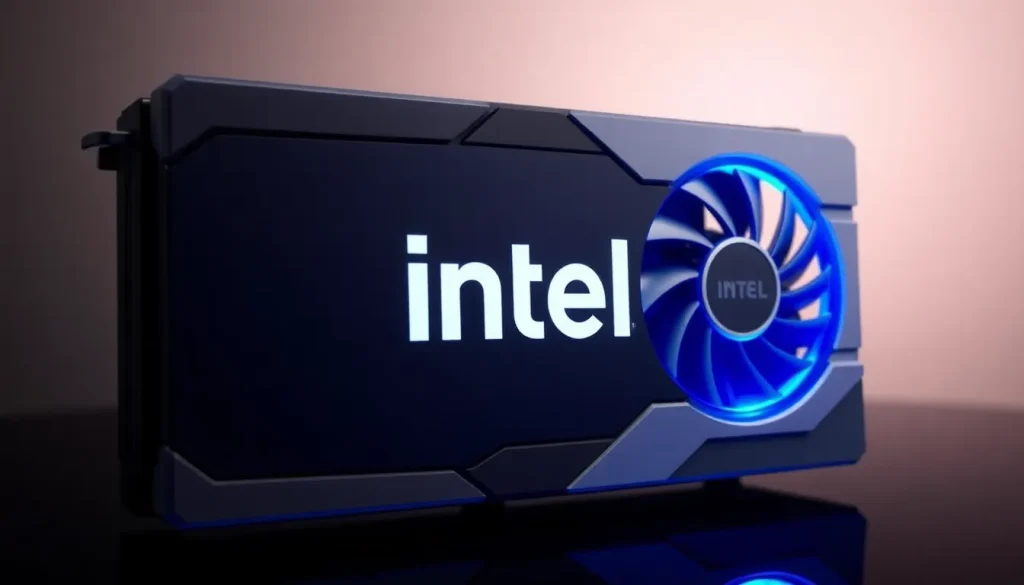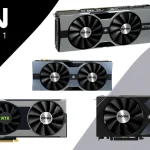Intel assures it won't discontinue its Arc GPUs for now

In the competitive world of graphics processing units (GPUs), Intel has made a bold entry with its Arc series, aiming to disrupt a market traditionally dominated by giants like NVIDIA and AMD. However, the journey has not been as smooth as anticipated, leading many to question the future of Intel’s GPU ambitions. Will the company persist in its efforts to establish a foothold in this challenging landscape?
Recent developments have raised eyebrows, particularly an announcement of a significant partnership with NVIDIA, which involves a staggering investment of $5 billion. This deal has sparked speculation about the potential discontinuation of Intel's Arc GPUs. Yet, Intel has firmly denied such claims, asserting that its commitment to the Arc line remains strong. Let’s explore the current situation in detail.
Intel's commitment to the Arc GPU lineup
Intel's assurance to continue launching new Arc GPU models aims to quell any concerns regarding the viability of its graphics hardware in the face of fierce competition. This commitment is crucial, especially considering the substantial investment from NVIDIA, which is poised to enhance development in both data center components and consumer computing.
In the consumer space, Intel is expected to introduce new x86 SoCs that will integrate NVIDIA's RTX graphics as chiplets. Although specifics are still under wraps, early indications suggest these new offerings may target portable devices and compact PCs. The timeline for their market availability remains uncertain.
The notion that Intel would incorporate NVIDIA GPUs into its processors raised alarms about the future of the Arc series. Fortunately, the company reassures us that this integration does not signify the end for Arc. According to sources, the collaboration may focus on a premium segment, while Intel's Arc GPUs could cater to budget-conscious consumers seeking reliable performance without the latest cutting-edge technology.
The collaboration between Intel and NVIDIA extends beyond consumer offerings; it also encompasses server components. These will include x86 CPUs integrated into NVIDIA's AI infrastructure, which will be made available to third parties. The NVLink technology will play a pivotal role in bridging the architectures of both companies, enhancing performance and scalability.
Evaluating the performance of Intel's Arc GPUs
When assessing the performance of Intel's Arc GPUs, it's essential to consider their standing against established competitors like NVIDIA and AMD. While Intel's initial offerings have not yet matched the performance levels of the RTX and Radeon series, they present a viable option for various users.
- Value for Money: Arc GPUs have been recognized for providing decent performance at competitive prices, making them an attractive choice for budget-conscious gamers.
- Innovative Features: The Arc series incorporates unique technologies such as hardware-accelerated ray tracing, which enhances gaming visuals.
- Driver Support: Intel has committed to regular driver updates, improving performance and compatibility with new games over time.
Nonetheless, benchmarks indicate that while Arc GPUs perform well in specific scenarios, they often lag behind their counterparts in more demanding applications. This performance gap is an area of focus for Intel as it seeks to refine and enhance its offerings in future releases.
Understanding the challenges faced by Intel in the GPU market
Despite its ambitions, Intel has encountered a series of challenges in establishing a successful GPU line. These hurdles can be attributed to a combination of fierce competition, market dynamics, and internal hurdles.
- Intense Competition: NVIDIA and AMD have a strong hold on the market, making it difficult for newcomers to gain traction.
- Technological Limitations: Intel has faced difficulties in optimizing their GPUs to match the high-performance benchmarks set by their rivals.
- Consumer Perception: Many gamers are hesitant to switch to a new brand, especially when existing options have proven reliability and performance.
These challenges highlight the steep learning curve that Intel faces in the GPU sector. However, the company’s commitment to ongoing development and innovation suggests a willingness to adapt and improve.
What does the future hold for Intel Arc GPUs?
The future of Intel's Arc GPUs hinges on several factors, including the successful execution of their partnership with NVIDIA and the ongoing development of their own technologies. Intel's strategy appears to focus on creating a diverse product lineup that appeals to different segments of the market.
As part of this approach, Intel is likely to:
- Expand Product Range: Introduce a wider variety of GPUs catering to different performance needs and budgets.
- Enhance Software Support: Continue to improve driver support and software optimization to boost performance.
- Invest in Research and Development: Allocate resources to innovate and develop cutting-edge GPU technologies.
This multi-faceted approach could enable Intel to carve out a niche in the competitive GPU market, allowing it to coexist alongside established players while gradually increasing its market share.
Community and developer engagement: a crucial aspect
Another vital aspect of Intel’s strategy is its engagement with the gaming and development communities. Actively seeking feedback from users and developers can help the company refine its products and better meet consumer expectations.
This engagement can take several forms:
- Beta Testing Programs: Allowing gamers and developers to test new hardware and software before their official release.
- Developer Tools: Providing resources that facilitate game development and optimization for Intel GPUs.
- Community Events: Hosting tournaments and events to foster a community around Intel's gaming products.
By fostering strong relationships with the gaming community, Intel can enhance its reputation and ensure that its products align with user needs and expectations.
As we look to the future, it’s clear that while Intel faces considerable challenges in the GPU market, its commitment to innovation and collaboration presents a promising outlook. The ongoing developments surrounding Intel's Arc series will be closely watched, and its ability to adapt to an evolving landscape will ultimately determine its success in this fiercely competitive arena.
For a deeper understanding of the current state of Intel's GPU strategy, check out this insightful video:




Leave a Reply